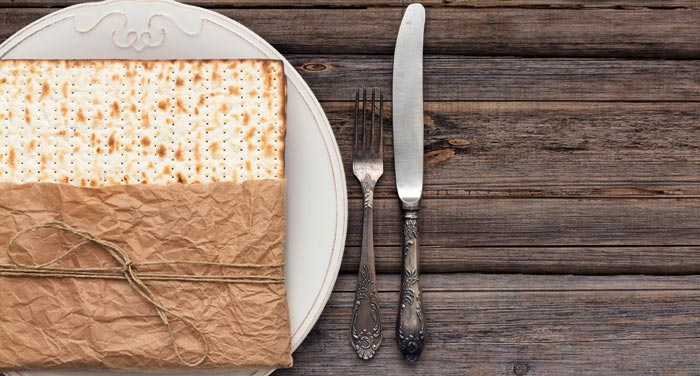In the Book of Genesis, Adam and Eve eat forbidden fruit off the Tree of Knowledge, become self-aware, and are suddenly conscious of their nudity.
“Ayekah? Where are you?” God calls out to Adam after the world’s first humans hide out of embarrassment.
Commentators have noted that God, being omniscient, knew exactly where Adam and Eve were hiding. His question was deeper: Where was the couple in connection to the world, now that they had lost their innocence?
The Conservative congregation Valley Beth Shalom (VBS), similarly, is asking people to go deep into themselves in its latest High Holy Days initiative, named “Ayekah.”
“We took that as a question not just for Adam and Eve but for every single one of us. … We really wanted some folks to take a minute and check in with themselves,” said VBS Rabbi Noah Farkas, who is spearheading “Ayekah,” a multimedia initiative with the cooperation of colleagues and the input of VBS board members.
The Encino synagogue’s initiative was launched Sept. 4 and includes a communal art exhibition; Torah learning sessions; daily emails with video messages; and shareable graphics for dissemination on social media.
Continuing up to Yom Kippur, (Oct. 11), “Ayekah” prompts people to reflect on six areas of their lives, one area per week. The subject matter involves personal inventories, relationships, giving levels, creative inputs, Jewish lives and openness to self and communal renewal.
The initiative is about more than introspection, though.
Participants are encouraged to answer these questions on note cards available at the synagogue. The cards are shaped like the pin markers used on Google Maps — meant to be tied into the theme of “Where are you?” — and are being hung from yarn spun across a mural of mountains that recently was painted onto the wall of the congregation’s main hallway by Liat Cohen, marketing and communications manager at VBS. Another mural, which includes “Ayekah” in English and Hebrew, features a mountain range and a tower transmitting radio signals.
“Over the course of the next six weeks, we hope to fill the wall with hundreds of these cards,” Farkas said.
To the right of the murals and above them on the second floor, the exhibition also features the Jewish-themed work of artists Ellen Cantor, Will Deutsch, Hillel Smith, Isaac Brynjegard-Bialik and Doni Silver Simons. Anne Hromadka Greenwald is the curator.
Additionally, 31 two-minute videos have been created for the project by the temple’s clergy and the day school’s director of Judaic studies, among others. Farkas said more than 5,000 people have signed up to receive the daily video messages. (Visit vbs.org to sign up for the mailing list.)
With the first week focusing on personal inventory, VBS Rabbi Ed Feinstein said in a video that the “Ayekah” question is the question.
“All of scripture, all of Jewish faith, is an answer to that question,” he said. “Where have you come from in your life? What are you doing with your life? Where are you going?”
During Week Two — relationships — a shareable graphic was available that read, “It is not good for one to be alone. I will create someone to be your opposite to help you through life,” taken from Genesis 2:18.
Six banners hang from the ceiling of VBS, adjacent to the murals, with the names of each of the initiative’s six categories. The idea, Farkas said, is for congregants to walk underneath the banners during the High Holy Days, fill out note cards and experience an immersive environment. He expects more than 2,000 note cards — all written anonymously — will be posted by the end of the project.
“We envision this as a postmodern Kotel,” he said.
Some responses attached to the mural are lengthy and personal. Farkas recalled one in which a person said her husband had recently died and she was making an attempt to be closer to her children.
At least two came from people feeling “lost.” One person wrote “behind schedule” in response to a prompt about self-renewal.
Not only VBS members are participating. Students at American Jewish University have been filling out note cards with self-reflections, Farkas said.
Elana Vorspan, VBS director of marketing and communications, is among those who helped work on the project, and she said it has been suggested that “Ayekah” be followed up with a program centered around “Hineni” (Here I am). It would explore what being a member of the shul means, Vorspan said.
For now, however, the focus is on making the “Ayekah” initiative as successful as possible. And for that, VBS needs buy-in from the community, Farkas said.
“We live in a really busy world and I think that the world overwhelms us and we get distracted with the needs of everyday traffic, meetings, emails, for our families putting food on the table, getting kids to bed, maintaining social calendars, maintaining business calendars, traveling. They take up our life and we’re asking people not just to be reactive but to be proactive, to not live on accident but on purpose, to get to that spiritual place,” he said. “I think it begins with this question: ‘Where are you?’ ‘Where are you this year?’ ‘Where do you come from?’ ‘What part of the world shapes you and what part of you shapes the world you live in?’ ”























 More news and opinions than at a Shabbat dinner, right in your inbox.
More news and opinions than at a Shabbat dinner, right in your inbox.